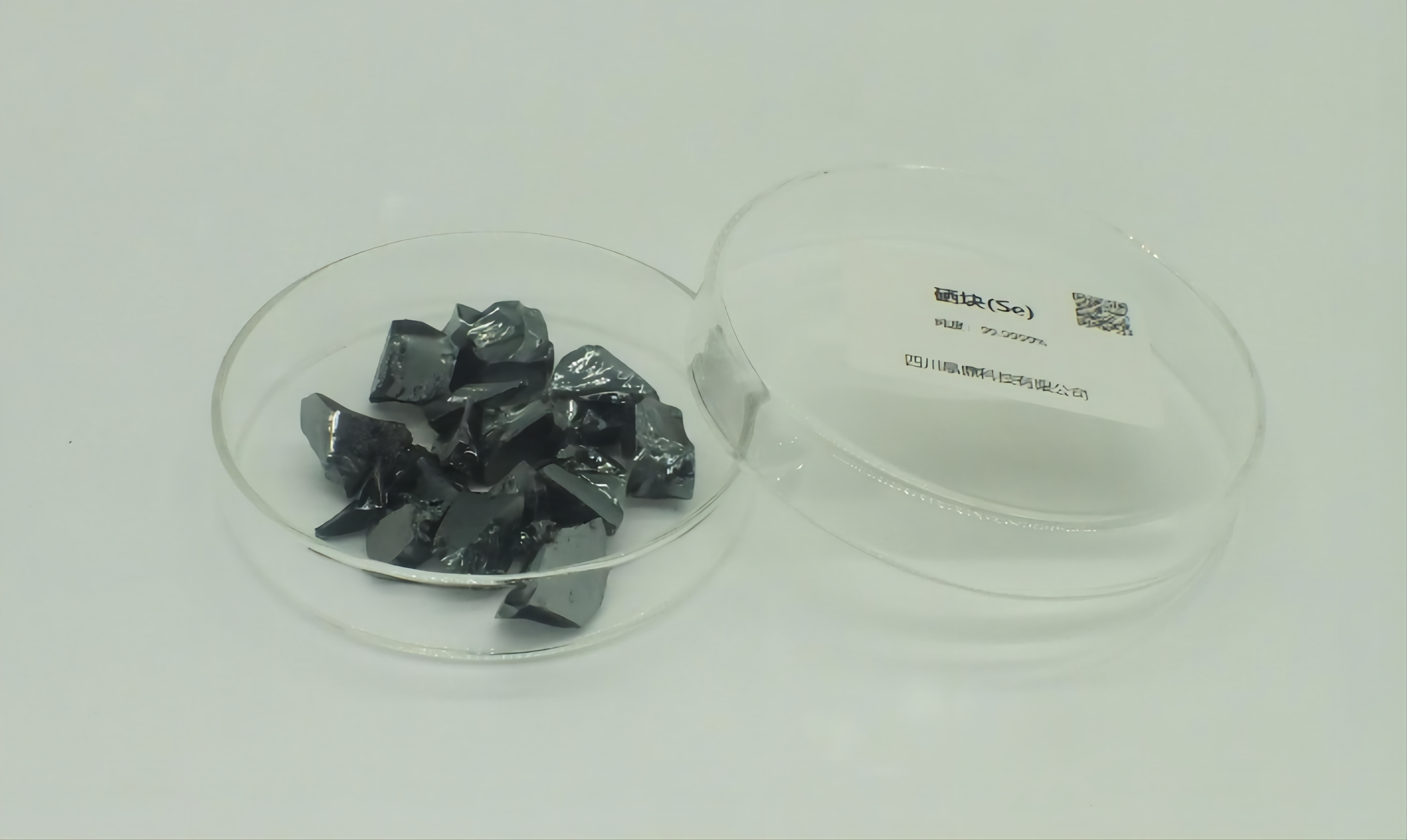The purification of high-purity selenium (≥99.999%) involves a combination of physical and chemical methods to remove impurities such as Te, Pb, Fe, and As. The following are key processes and parameters:
1. Vacuum Distillation
Process Flow:
1. Place crude selenium (≥99.9%) in a quartz crucible within a vacuum distillation furnace.
2. Heat to 300-500°C under vacuum (1-100 Pa) for 60-180 minutes.
3. Selenium vapor condenses in a two-stage condenser (lower stage with Pb/Cu particles, upper stage for selenium collection).
4. Collect selenium from the upper condenser;碲(Te) and other high-boiling impurities remain in the lower stage.
Parameters:
- Temperature: 300-500°C
- Pressure: 1-100 Pa
- Condenser material: Quartz or stainless steel .
2. Chemical Purification + Vacuum Distillation
Process Flow:
1. Oxidation Combustion: React crude selenium (99.9%) with O₂ at 500°C to form SeO₂ and TeO₂ gases.
2. Solvent Extraction: Dissolve SeO₂ in an ethanol-water solution, filter out TeO₂ precipitate.
3. Reduction: Use hydrazine (N₂H₄) to reduce SeO₂ to elemental selenium.
4. Deep De-Te: Oxidize selenium again to SeO₄²⁻, then extract Te using solvent extraction.
5. Final Vacuum Distillation: Purify selenium at 300-500°C and 1-100 Pa to achieve 6N (99.9999%) purity.
Parameters:
- Oxidation temperature: 500°C
- Hydrazine dosage: Excess to ensure complete reduction .
3. Electrolytic Purification
Process Flow:
1. Use an electrolyte (e.g., selenous acid) with a current density of 5-10 A/dm².
2. Selenium deposits on the cathode, while selenium oxides volatilize at the anode.
Parameters:
- Current density: 5-10 A/dm²
- Electrolyte: Selenous acid or selenate solution .
4. Solvent Extraction
Process Flow:
1. Extract Se⁴⁺ from the solution using TBP (tributyl phosphate) or TOA (trioctylamine) in hydrochloric or sulfuric acid media.
2. Strip and precipitate selenium, then recrystallize.
Parameters:
- Extractant: TBP (HCl medium) or TOA (H₂SO₄ medium)
- Number of stages: 2-3 .
5. Zone Melting
Process Flow:
1. Repeatedly zone-melt selenium ingots to remove trace impurities.
2. Suitable for achieving >5N purity from high-purity starting materials.
Note: Requires specialized equipment and is energy-intensive .
Figure Suggestion
For visual reference, refer to the following figures from literature:
- Vacuum Distillation Setup: Schematic of a two-stage condenser system .
- Se-Te Phase Diagram: Illustrates separation challenges due to close boiling points .
References
- Vacuum distillation and chemical methods:
- Electrolytic and solvent extraction:
- Advanced techniques and challenges:
Post time: Mar-21-2025


